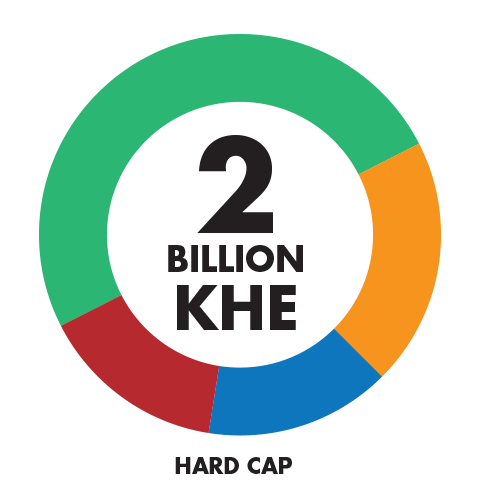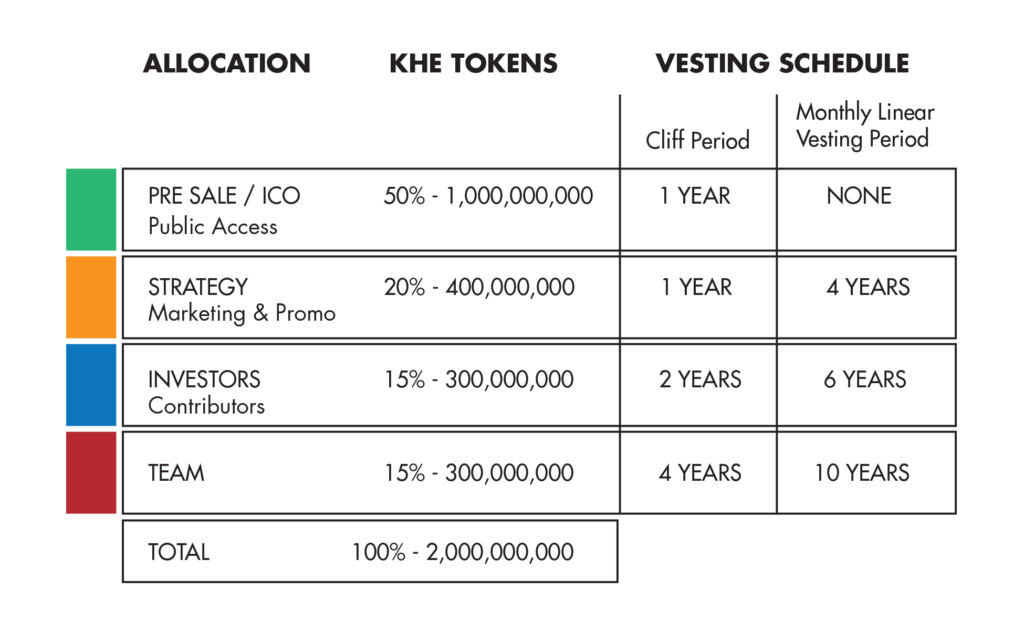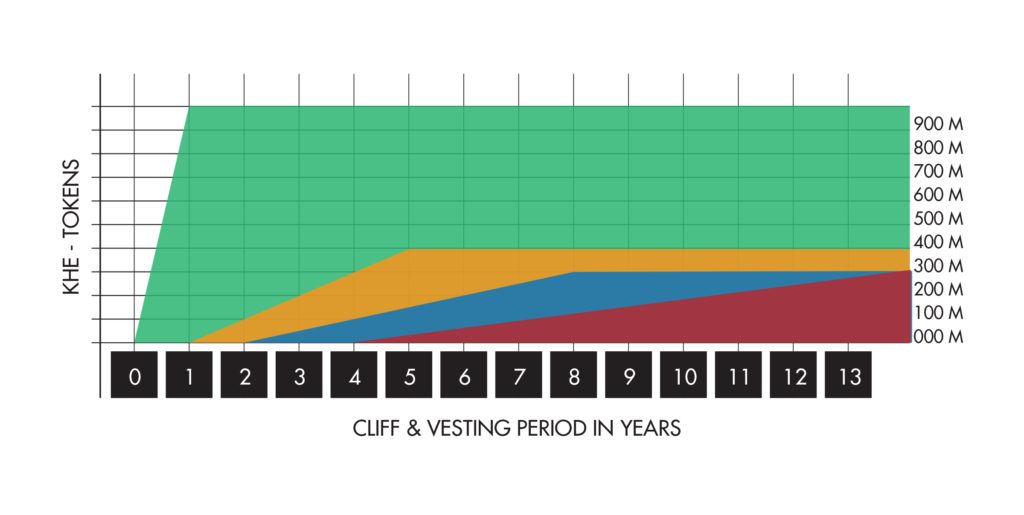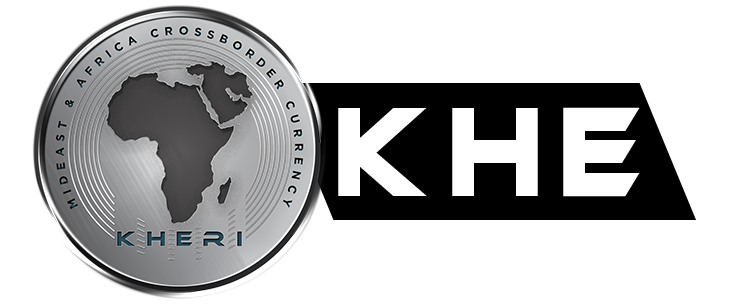KHE
KHERI NATIVE TOKEN
Imaginative Use Cases
and Future Prospects
for the KHERI Blockchain's
Native Cryptocurrency

Kila
the smallest unit
The native cryptocurrency of the KHERI blockchain, KHE, holds significant utility and potential for various use cases within the ecosystem.
In the KHERI blockchain ecosystem, KHE, the native cryptocurrency, will be divisible to 9 decimals, ensuring precision and versatility in handling token values. The smallest unit of KHE will be referred to as ‘KILA.’
Each KHE token will be subdivided into one billion Kilas
(1 KHE = 1000,000,000 Kilas).
This high level of divisibility allows for seamless microtransactions and enables users to conduct financial activities with extreme precision.
KHE - USE CASES
KHE can serve as a digital medium of exchange within the KHERI blockchain network. Participants can use KHE to conduct transactions, pay for goods and services, and facilitate cross-border trade.
Its fast and secure nature, coupled with low transaction fees, would make KHE an efficient and convenient currency for everyday transactions.
KHE can act as a reliable store of value within the KHERI ecosystem. Participants can hold KHE tokens as a means of preserving wealth and protecting against inflation. The limited supply and decentralized nature of KHE can provide a hedge against traditional currency fluctuations, making it an attractive asset for long-term value preservation. transactions.
KHE can be integrated into various DeFi applications within the KHERI blockchain ecosystem. Participants can utilize KHE for lending, borrowing, yield farming, and liquidity provision. These DeFi protocols would empower individuals with greater financial control, enabling them to earn passive
income, access credit, and engage in decentralized trading.
KHE can revolutionize cross-border payments and remittances. With the KHERI blockchain’s low transaction fees and fast transaction settlement times, individuals can send and receive KHE tokens across borders with ease. This would provide a cost-effective and efficient alternative to traditional
remittance services, benefiting both senders and recipients.
KHE can be integrated into e-commerce platforms and decentralized marketplaces within the KHERI ecosystem. Participants can use KHE to purchase goods and services from online merchants, unlocking new avenues for global commerce. The transparent and secure nature of blockchain-based transactions would enhance trust and enable seamless cross-border trade.
KHE can facilitate the tokenization of real-world assets, such as real estate, commodities, or intellectual property. By representing these assets as KHE-based tokens, fractional ownership, liquidity, and accessibility to global markets can be enhanced. This opens up opportunities for investment, increased market efficiency, and broader asset ownership.
KHE - FUTURE POTENTIAL
KHE’s low transaction fees and divisibility make it well-suited for microtransactions and micropayments. This opens up possibilities for various applications, such as pay-per-use services, content monetization, and incentivization models for online platforms.
KHE can enable decentralized governance within the KHERI blockchain network. Token holders can use their KHE tokens to participate in voting processes, influencing network upgrades, protocol changes, and community-driven initiatives. This fosters a sense of ownership and collective decision-making among participants.
KHE could bridge the gap between traditional financial systems and the blockchain world, facilitating interoperability and cross-platform transactions.
KHE might become compatible with other blockchain networks, enabling seamless interaction and interoperability with diverse ecosystems.
KHE could be used to facilitate machine-to-machine transactions within IoT networks, enabling automated and secure microtransactions between devices.
KHE could power loyalty programs, allowing businesses to reward customers with KHE-based tokens, fostering customer engagement and incentivizing loyalty.
These are just a few imaginative possibilities, and as the KHERI blockchain and its native cryptocurrency KHE continue to evolve, additional innovative use cases and future potential are likely to
emerge.
TOKENOMICS
KHE will have a predetermined maximum supply, and there would be no additional minting or creation of new tokens beyond this hard cap.

KHERI has set a hard cap of 2 billion KHE tokens, establishing a limited and scarce supply that ensures the token’s value and long-term stability.
This strategic decision creates a foundation for a robust and sustainable economic system, where every KHE token holds intrinsic worth within the interconnected network of users, businesses, and institutions.
As such, our tokenomics framework ensures fair distribution, encouraging widespread participation with a clear vesting schedule reducing concentration of wealth.



